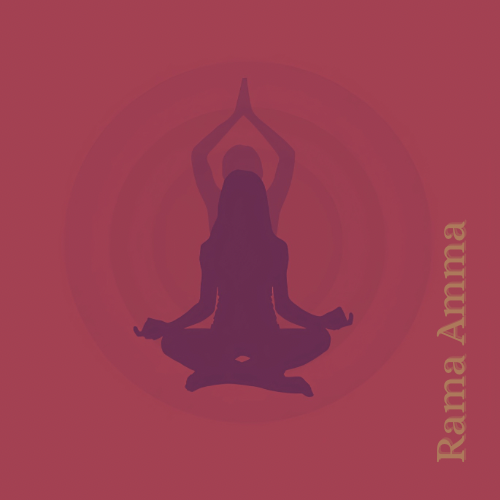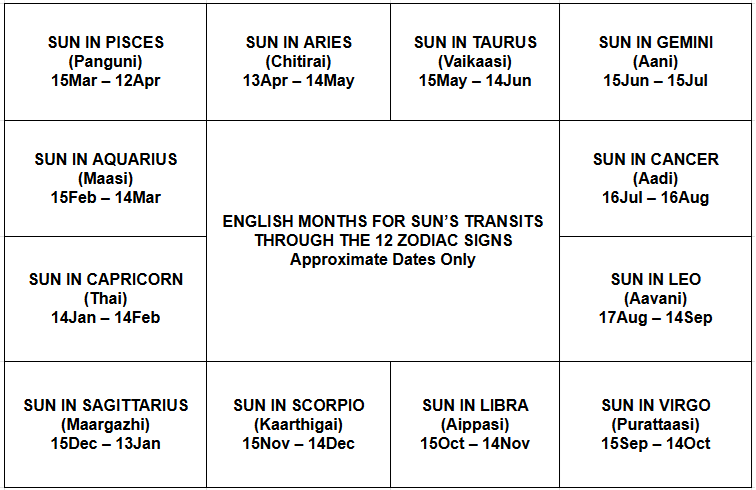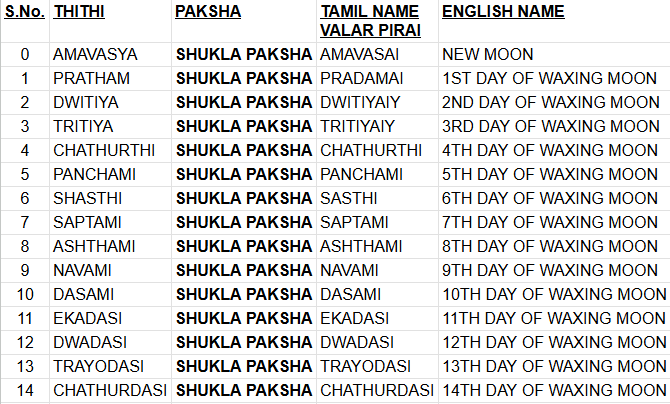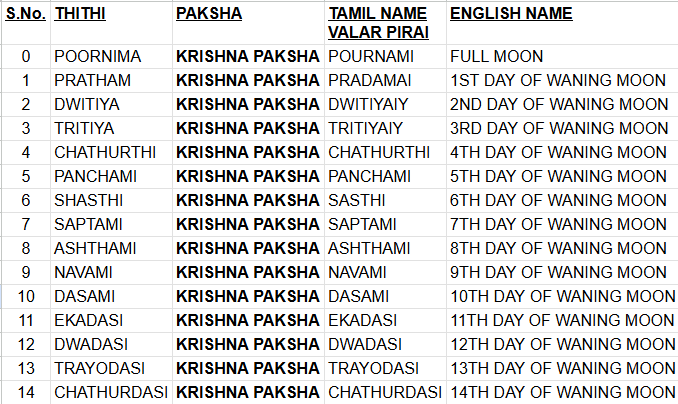
Astrology is A Science
Blogs & Articles
Rama Gopalakrishnan Amma, Chennai, India 🇮🇳
Table of ContentsToggle Table of ContentToggle
Mahamalaya Amavasya And Pitru Karma
September 06, 2025
Astrology has been an interesting subject. A learning curve for me. During my coaching classes I include topics related to this subject because one can relate it to when this important day falls for all departed souls in the family.
Better understanding and grasp can be had if we cast an example horoscope as on 6th September, 2025. In a cast horoscope we find several details given among other details in the horoscope/chart.
For eg. A baby is born today. We need the date of birth, time of birth and place of birth to cast the baby’s birth chart aka horoscope. Let’s take one single example to see how details are extracted for a birth as well as for a death occurring at the same date, time and place.
Eg. DoB: 6th September, 2025. ToB: 18:46Hrs IST. PoB: Mylapore, Chennai.
Details will appear as below:
Natal Chart Details
Time Zone: 5:30:00 (East of GMT)
Place: 80 E 15′ 00″, 13 N 02′ 00″ Mylapore, Chennai, India
Altitude: 0.00 meters
Lunar Yr-Mo: Viswa-vasu – Bhadrapada
Tithi: Sukla Chaturdasi (Ve) (31.14% left) (FOR DEATH WE TAKE THE THITHI AND ZODIAC WHERE IS MOON TRANSITING (in Aquarius/Kumbh) AT THE TIME OF DEATH ALONGWITH THE TRANSIT OF SUN (in Leo/Simha).
Vedic Weekday: Saturday (Sa)
Nakshatra: Dhanishtha (Ma) (17.93% left) WHEREAS FOR BIRTHS WE TAKE THE NAKSHATRA AND ZODIAC (in Aquarius/Kumbh) WHERE THE IS MOON TRANSITING AT THE TIME OF BIRTH ALONGWITH THE TRANSIT OF SUN (in Leo/Simha).
Yoga: Sukarman (Ma) (67.83% left)
Karana: Vanija (Ve) (62.27% left)
Hora Lord: Mercury (5 min sign: Aq)
Mahakala Hora: Mercury (5 min sign: Cp)
Kaala Lord: Mars (Mahakala: Mars)
Sunrise: 6:01:31
Sunset: 18:13:04
Janma Ghatis: 31.8533
Ayanamsa: 24-11-59.32
Sidereal Time: 17:40:33
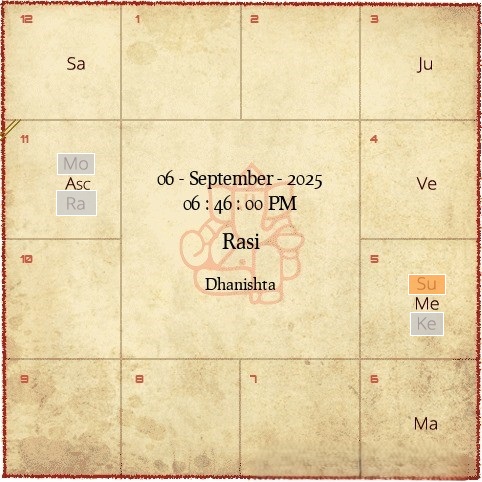
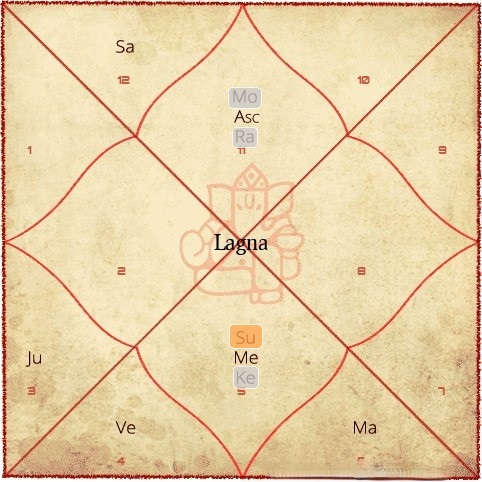
To sum up: For birth we take the BIRTH STAR OR THE NAKSHATRA for a baby born on this day which is DHANISHTHA.
A birth star is based on the transit of Moon (Mo) in a particular asterism/star, at a particular degree in a particular zodiac sign alongwith the transit of Sun (Su) in a zodiac at the time of BIRTH to know the accurate month and birth star of the new born baby.
In case of death of a person at the same time, on this same date at the same place, we note the THITHI AND THE PAKSH which in our example happens to be the Shukla Paksh Chathurdasi when Sun is in Leo.
Treatment for birth is different, where NAKSHATRA is taken into consideration. For death ceremonies the THITHI and the month is given importance to perform the Pinda daan. These rituals are also called as Pitru Karma which is considered as the duty and responsibility of a son(s) to his parents and childless relatives which is to offer food and water to quench the hunger and thirst of the departed soul(s). It’s ingrained in sons in the family to perform this ritual upon the death of a parent(s) to earn the blessings of their ancestors for the son and his family’s welfare and prosperity. This is explained in more detail in the GARUDA PURANA among other holy Hindu scriptures.
For births and other auspicious events nakshatra is taken. While casting a birth chart the details of nakshatra, shukla or krishna paksha, day of the week, time of birth, the placement of the nine planets (navagrahas), etc are taken.
Whereas for death the sun’s placement in a particular zodiac sign is noted as well as the thithi and the paksh (moon’s) is taken note of as on date of death. Only these two details are extracted to perform when the devasam or thithi or shraadh comes in subsequent years the sun’s placement in the same sign as well as the thithi with paksh is taken into consideration and the ritual is conducted by the family’s male heirs. Dates may differ due to transit of moon depending on which paksh is to be taken. Moon’s cycle of 29+ days to cover 360 degrees is very important to fix the thithi for a departed soul for performing the karma rituals each year.
In south india, hindus conduct this ritual for each parent who has departed as and when their thithi, paksha and month occurs later in subsequent years. If both parents have died on different dates in different thithi and paksha, the karma rituals are performed separately for both, the father as well as the mother, where usually the family priest helps in pin pointing the correct dates on which to perform the shradda.
There are circumstances where members are indisposed to perform such pitru karma for parents or other close family members who have no heirs to perform such rituals. At times the actual day or date of death also remains unknown therefore in such cases, it is usually performed on the penultimate day of the mahamalaya amavasya day where one is allowed to conduct this karma ritual for all those of the departed souls in their family. Where individual thithis are bypassed during the pitru paksha. It is similar to an all souls day, where every soul is mentioned and karma rituals done to earn their blessings for the family.
This year is unique in the sense that the pitru paksha started with the chandra grahan (lunar eclipse) and will end with the surya grahan (solar eclipse) a rare occurance. Note the placements of nodes – rahu with moon and ketu with sun. When navaratri begins the sun would have transited into virgo and moon too would have joined with sun in virgo.
Hence we see how pitru paksha and mahalaya amavasya are deeply significant observances in the hindu tradition, linked with honoring one’s ancestors (pitrus).
“pitru” means ancestors/forefathers.
“paksha” means fortnight where it is a 15-day period in the krishna paksha (waning phase of the moon starting from full moon/poornima) of the month of bhadrapada / ashwin (when sun is in leo/simha in august–september), depending on the lunar calendar. (please check out the chart and tables given below for more clarity).
Where performance of the shraddha, tarpan, and pinda daan rituals is conducted to honor and offer food, water, and prayers to departed ancestors up to three previoius generations’ gotra and names on paternal side lineage alongwith their deceased wives and on the maternal side’s departed ancestors up to three previous generations’ gotras and names of the deceased mother and her deceased father and her mother, her grandfather and grandmother.
It is believed that during these 15 days, in this particular month at the beginning of the waning moon, the souls of ancestors visit the earthly realm, and offering them respect by way of food, water and prayers will ensure peace, prosperity and blessings for their family members. It should be noted that in pitru paksh, the krishna paksha becomes operative for both krishna as well as shukla paksha thithis.
It is a practice to perform tarpan (water offering with black sesame seeds, cooked rice formed into a big ball aka pinda), raw bananas, raw uncooked rice, moong dal, jaggery and donations in the form of money to the brahmins guiding the family member in performing such karma ritual.
Usually during such days simple, sattvic but elaborate meals are served to the priests conducting the rituals and later partaken by the family for lunch. A tiffin for dinner. Foods like non-veg, onion, garlic, alcohol are avoided.
Such karma rituals are generally performed by the eldest male in the family, but women can also do them if no male is present or available by giving the darbai or the dried grass of a specific variety to a proxy male or proxy priest who will then be authorised to perform the shraddha on the family’s behalf.
Amavasya means new moon day. Mahalaya means “the great abode” where the ancestors are believed to rest in another universe very different from ours.
This mahalaya amavasya falls on the last day of the pitru paksha which is a special day meant for all departed souls, irrespective of thithi or paksha where this day is set aside for ancestral rituals, the final and most powerful day of pitru paksha is mahalaya amavasya, just before the onset of the auspicious festival of navratri.
Right after this pitru paksha mahalaya amavasya, the auspicious nine day festival begins which is known as the navaratri (nava = nine. Ratri = nights).
Which is associated with invoking goddess durga, as from the next day of the mahalaya amavasya, begins the bright fortnight (shukla paksha) marking devi paksha and the start of navratri.
CHART AND TABLES FOR EASY REFERENCE:
MONTHS FOR SUN’S TRANSIT THROUGH THE ZODIAC SIGNS (WITH TAMIL MONTHS’ NAMES IN BRACKETS) IS GIVEN BELOW.
TAMIL AND ENGLISH MONTHS FOR SUN’S TRANSITS (ONLY APPROXIMATE DATES ARE GIVEN) THROUGH THE 12 ZODIAC SIGNS
Click here to see Names Chart for Sun Transit Months Spreadsheet
THITHIS FALL IN TWO DIFFERENT PERIODS AS PER THE TRANSIT OF MOON. IT’S THE WAXING MOON PHASE AND WANING MOON PHASE. DETAILS ARE GIVEN IN THESE TWO TABLES BELOW.
Click here to see Moon Transit Thithis for Shukla Paksha & Krishna Paksha Spreadsheet
May we be blessed by the Almighty.
- Rama Gopalakrishnan
Kazhipattur, OMR, near Chennai
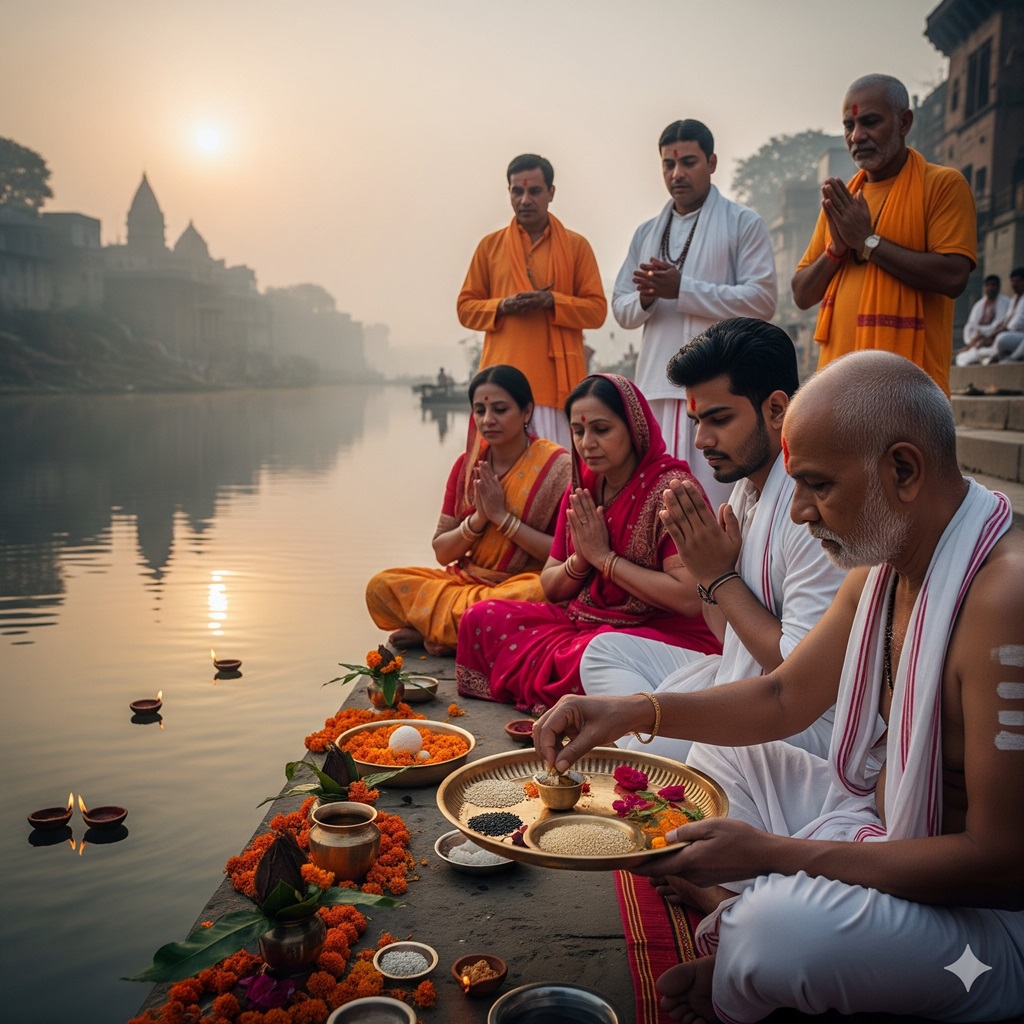
Beyond the Horoscope: Deep Dive into the Pillars of Indian Astrology
July 24, 2025
Indian Astrology, or Vedic Astrology, is a rich and intricate system built upon several foundational pillars that go far beyond the common understanding of Sun Sign horoscopes where characteristics are analysed but no Timing of Events are possible which is possible only through the Indian Astrology system. To truly appreciate its depth, it’s essential to explore these core principles.
A key distinction lies in the Zodiac system used. Unlike Western astrology, which employs the Tropical Zodiac (based on the seasons and the vernal equinox), Vedic Astrology utilizes the Sidereal Zodiac. This system aligns with the actual positions of the constellations in the sky, accounting for the precession of the equinoxes, which causes a gradual shift over time. This fundamental difference means that most individuals will find their Vedic Sun Sign to be one sign prior to their Western Sun Sign.
Another cornerstone of Vedic Astrology is the concept of Nakshatras, or lunar mansions. The zodiac is divided into 27 Nakshatras, each spanning 13 degrees and 20 minutes. Each Nakshatra has its own unique ruling deity, planetary ruler, symbolism, and characteristics, adding an incredibly nuanced layer upon layer to astrological interpretations. Analyzing a planet’s placement in a specific Nakshatra provides much deeper insights into its manifestation than just its zodiac sign placement.
Beyond the main birth chart (Rashi chart), Vedic Astrology extensively uses Divisional Charts or Varga Charts. These are specialized charts derived mathematically from the main chart, each focusing on a specific area of life such as marriage (Navamsha), career (Dashamsha), children (Saptamsha), and so on. These divisional charts provide microscopic details about particular life aspects, revealing strengths and weaknesses not always apparent in the main Rashi chart. The presence of specific Doshas (malefic combinations) or Yogas (benefic combinations) in a chart is also crucial for accurate analysis. These combinations indicate inherent challenges or blessings.
Ultimately, Indian Astrology is not just about prediction, but about understanding the karmic fabric of one’s existence. By identifying Doshas and weak planetary placements, astrologers recommend specific remedies (Upayas or Pariharams) to alleviate negative effects. This interplay between karma and free will, illuminated by the profound insights of the stars, makes Vedic Astrology a comprehensive guide for navigating the complexities of human life.
One gets to understand the fundamentals of Indian Astrology and then proceed further to learn the various techniques to predict from a Chart or Horoscope. Foundation is the key and the first step to grasp the concepts of the rules laid down in Astrology. A lifetime is not enough to learn. It’s an ocean out there. Understanding the basics first is the foremost step towards becoming a good astrologer. There are no short cuts to learn Astrology.
May we be blessed by the Almighty.
- Rama Gopalakrishnan
Kazhipattur, OMR, near Chennai
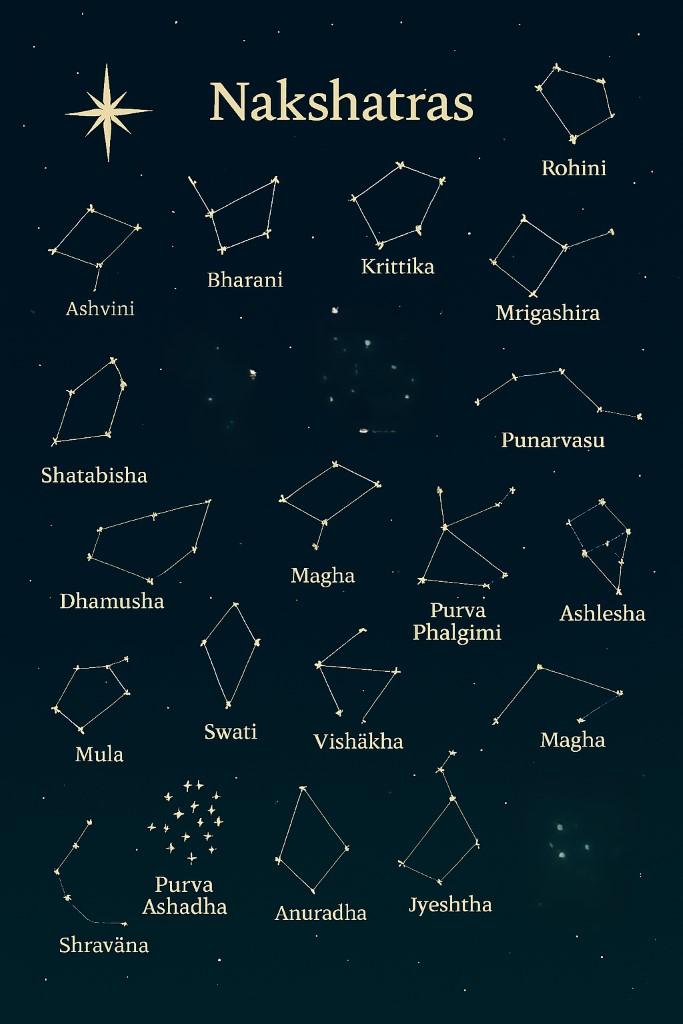
The Art of Prediction: How Indian Astrology Foresees Your Future
July 24, 2025
One of the most captivating aspects of Indian Astrology is its ability to offer astrological predictions, providing insights into future trends and potential life events. However, it’s crucial to understand that these predictions are not about deterministic fate, but rather about illuminating probable paths and karmic patterns. The primary predictive tool in Vedic Astrology is the Dasha System, with Vimshottari Dasha being recommended by none other than the Creator of Astrology, Maharishi Parashara, and the most widely used Dasha system.
The Vimshottari Dasha system divides a person’s life into major planetary periods, each ruled by one of the nine planets (NavaGrahas). During a planet’s Dasha, its energies and significations become particularly prominent in the individual’s life during its currency. These major periods aka Maha Dashas are further subdivided into sub-periods (Bhuktis/Antars), and even smaller divisions like Pratyantars, etc., allowing for highly detailed and nuanced predictions. By analyzing the condition of the Dasha lord in the birth chart (its strength, house placement, aspects, etc.), astrologers can forecast likely outcomes and influences during that specific period.
Another vital predictive technique involves Planetary Transits (known as Gochara). This involves observing the current positions of planets in the sky and how they interact with the natal placements in an individual’s birth chart. For example, when Saturn transits a particular house or aspects a specific planet in your birth chart, it can indicate periods of challenges, delays, or significant life lessons related to that area.
While astrology can highlight potential events, it also emphasizes free will. Knowledge of impending challenges or auspicious opportunities allows individuals to make informed decisions and choices. This often involves suggesting remedies or Upayas or Pariharams, which can range from specific prayers, mantras, gemstone recommendations, or charitable acts, designed to mitigate negative influences or enhance positive ones.
Other predictive branches include Prashna Marga (horary astrology, answering specific questions based on the moment the question is asked) where a chart for that specific question is cast and analyzed and Muhurat (finding auspicious timings for new beginnings). The accuracy of predictions largely depends on the astrologer’s expertise, intuition, and the precise birth details provided. Ultimately, Indian Astrology serves as a profound guidance system, empowering individuals to understand their karmic journey shaping their destinies.
May we be blessed by the Almighty.
- Rama Gopalakrishnan
Kazhipattur, OMR, near Chennai

The Cosmic Architects: Understanding Planetary Positions in Your Birth Chart
July 24, 2025
In Vedic Astrology, planets are not just celestial bodies; they are considered powerful cosmic architects, each representing distinct energies, archetypes, and influences that shape our lives. These nine “planets,” known as Grahas or the Navagraha (Nava=9, Graha=Planets), include the Sun, Moon, Mars, Mercury, Jupiter, Venus, Saturn, and the two shadowy nodes, Rahu and Ketu. Their specific planetary positions in your birth chart – within different Zodiac Signs and Houses – reveal the tapestry of your personality and destiny.
Each Graha has its unique portfolio:
- Sun (Surya): Represents the soul, Atma, ego, authority, father, and overall vitality. Its position indicates your core identity and life purpose.
- Moon (Chandra): Signifies the mind, emotions, mother, intuition, and inner peace. It reveals how you process feelings and react to the world.
- Mars (Mangal): Governs energy, aggression, courage, siblings, risk-taking and real estate. Its placement indicates your drive and assertiveness.
- Mercury (Budha): Rules communication, intellect, logic, education, and business. It shows your mental aptitude and how you express yourself.
- Jupiter (Guru): The great benefic, representing wisdom, knowledge, fortune, teacher, guru, guide, children, and spirituality. A strong Jupiter blesses with abundance and guidance.
- Venus (Shukra): Planet of love, relationships, luxury, fine arts, and beauty. It indicates your aesthetic sensibilities and how you experience pleasure.
- Saturn (Shani): The taskmaster, signifying discipline, karma, challenges, hard work, longevity, and service. Its position often points to areas of life where you face lessons and develop resilience.
- Rahu (North Node): A shadowy planet associated with desires, ambition, foreign influences, expansion and unconventional pursuits. It often indicates areas of intense focus or obsession.
- Ketu (South Node): Also shadowy, representing detachment, spirituality, past life talents, and liberation. It often points to areas where you naturally excel or feel a sense of completion.
Beyond individual placements, astrologers also analyze aspects (the angles planets form with each other) and conjunctions (when planets are close together). These interactions further modify their influence, creating complex dynamics that define the uniqueness of each individual’s Vedic Astrology chart. Understanding these cosmic architects empowers you to work with their energies, rather than against them, for a more harmonious life.
May we be blessed by the Almighty.
- Rama Gopalakrishnan
Kazhipattur, OMR, near Chennai
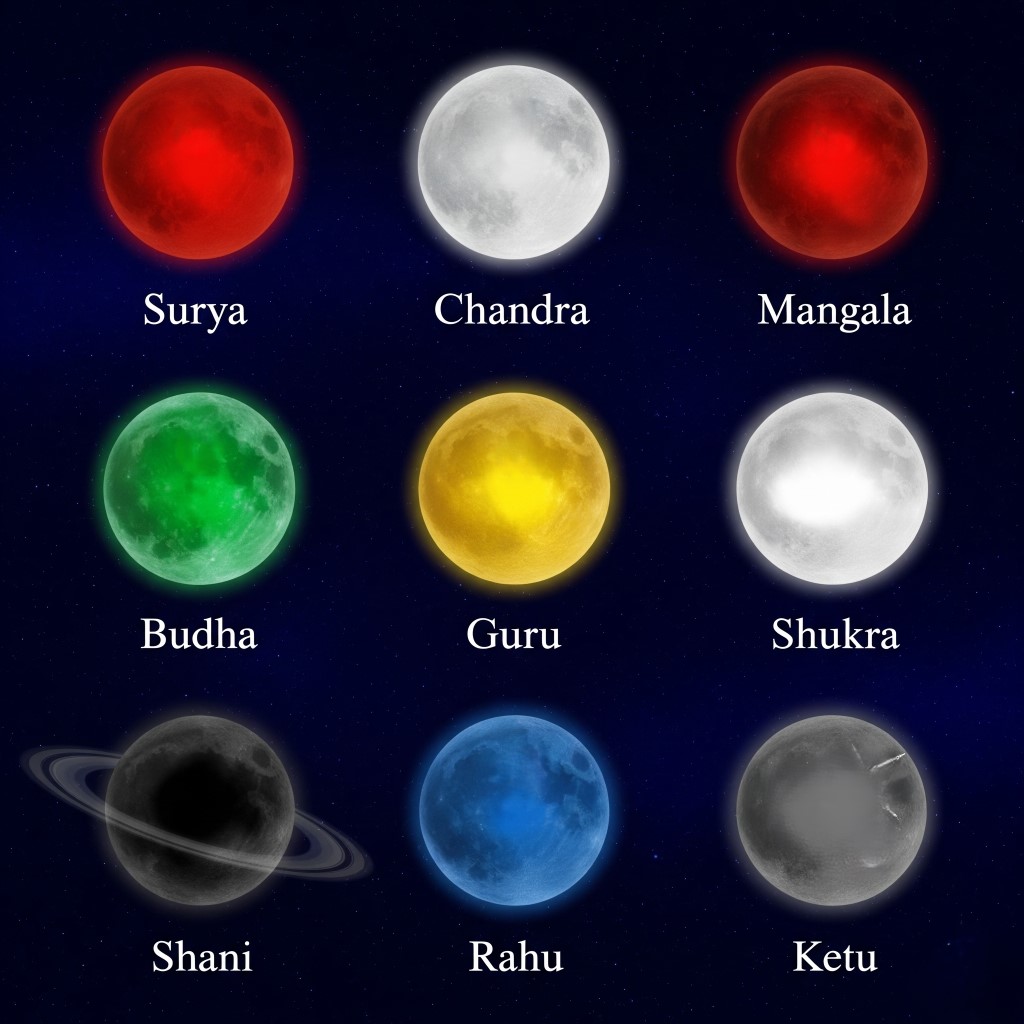
North vs. South: Decoding the Indian Astrological Chart Styles
July 24, 2025
One of the first things that newcomers to Indian Astrology often notice is the difference in how birth charts are represented. The most predominant among several styles are the two distinct chart styles viz., the South Indian Chart and the North Indian Chart styles which Indian Astrology uses. The circular Western charts are different from the Indian ones in use. One must remember that these are merely chart styles which look different but these formats represent the exact same astrological data in them. The planets, signs, and their relationships are identical; only the visual representation changes.
The North Indian Chart typically features a diamond-shaped grid. In this system, the Houses (or Bhavas) are not fixed. The first house is always the top diamond with the zodiac sign number and the houses 1 to 12 are counted anti-clockwise. The Lagna (Ascendant, or rising sign) is marked in the first house and the subsequent Signs are filled in sequentially around the chart. This makes it easy to visually track the houses with the number counting from the top house which always represents the Rising Sign aka Ascendant. IF No. 5 is shown at the top house of the chart then House Number 5 then Leo the No.5 in the natural Zodiac Sign is to be treated as the 1st Bhava or 1st House in which case the succeeding zodiac Sign Virgo becomes the 2nd Bhava or 2nd House, the 3rd is Gemini and so on and so forth.
In contrast, the South Indian Chart uses a square grid where the Zodiac Signs are fixed in their positions. Each square always represents a specific sign (e.g., Aries always is the 2nd from right to left in the top row, Taurus next to it, then Gemini…etc.). The Houses then are counted in a clockwise direction from the Lagna, which can be in any square depending on the individual’s birth details. This format allows for very easy, quick identification of the Signs, as the Zodiac Signs never move from their designated boxes.
Neither system is inherently superior to the other; they are simply different conventions developed across various regions of India. Astrologers learn to read both, as the underlying principles of astrological interpretation remain consistent. The choice often comes down to regional tradition or personal preference. Regardless of the visual style, the deep insights derived from the planetary positions and their interactions within the houses remain the core of any Indian Astrology chart reading. Understanding these visual distinctions is the first step in appreciating the rich diversity within Indian astrological practices.
May we be blessed by the Almighty.
- Rama Gopalakrishnan
Kazhipattur, OMR, near Chennai

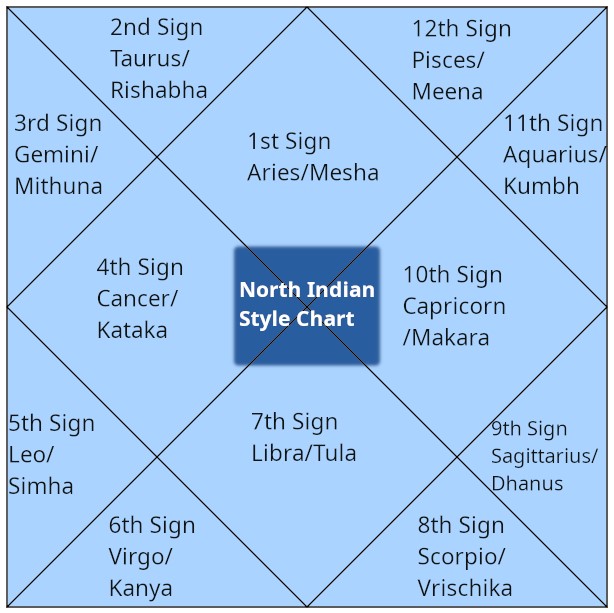
Unveiling Your Cosmic Blueprint: An Introduction to Indian Astrology
July 24, 2025
Indian Astrology, also known as Vedic Astrology or Jyotish, is an ancient science that offers a profound peek through which to understand ourselves and our journey through life. Jyotish delves deep into the cosmic energies at play the moment we are born, that becomes our birth chart or Kundali which is our unique “cosmic blueprint”.
Indian Astrology is based on the principle of karma and destiny. This should not be understood as something rigid or an unchangeable fate, but rather brings out our inherent tendencies, strengths, weaknesses, and potential life paths based on past actions and the celestial configuration at birth. It acts as a powerful guide for self-discovery and spiritual growth, empowering individuals to make conscious choices and navigate life’s challenges with greater awareness.
My journey since I took up Indian Astrology has changed me for the better, more than my own expectations. It was an amalgamation of astronomy, astrology, psychology, spirituality, self awareness and course correction along the path. Made me feel so much better after I keenly followed the rules of Astrology as per my own birth chart.
The core in Jyotish is the birth chart. It’s a complex map showing the precise positions of the Sun, Moon, and other planets among a total of nine (known as Grahas) in various zodiac signs and houses at the exact time and place of our birth, frozen in birth chart time forever. Each planet and zodiac sign holds specific significations aka karakatwas. I perceive these 9 planets as members of a joint family living together in a big house with 12 boxes/smaller house. Even though there are 12 houses, some planets are put together in a single house and made to stay together, interact together. What they do, how they react, how they help the individual are matters worth the research which is intriguing. All 9 Grahas interconnect with each other to reveal a person’s personality, relationships, career potential, health, finances, skillsets, talents and much more.
Understanding your Kundali can shed light on certain patterns which govern our lives, why we are what we are and the experiences – both positive and not so positive – that we go through at different points in time. The beauty of this divine science is to get insights into successful or challenging periods. During challenging times how nice it would be to be forewarned and be forearmed which makes for a better landing rather than a surprising hard landing. Such insights guide us and teach us lessons in how best to manage a difficult situation as and when it arrives. This wisdom of divining the Stars has been passed down from ages through our revered sages and maharishis for us to lead a better, a more peaceful and blessed life.
May we be blessed by the Almighty.
- Rama Gopalakrishnan
Kazhipattur, OMR, near Chennai
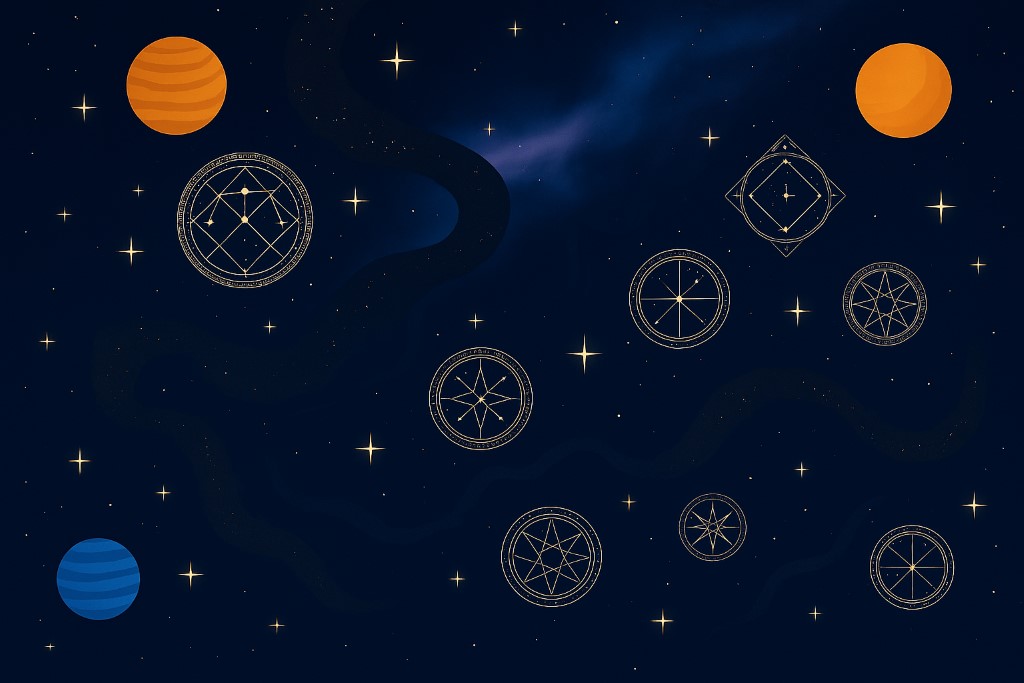
Astrology - Planetary War
July 19, 2025
A humble presentation in a brief session in Astrology, my observations and interpretations about the celestial combination of planets.
Pranams to Pujya Shri B V Raman ji, a humble and an unassuming man for all the knowledge he possessed, also known as the father of Astrology, who helped in fixing the best possible muhurta for India which is celebrated as the Indian Independence Day on 15th August, every year and his prediction on World War II due to the coming together of two malefic planets namely Mars/ Kuja/ Mangal and Ketu/ Southern Node/ Dragon’s Tail in a different zodiac at that time. But this time it is occurring in Leo.
We already are witness to the disturbed state of the world like never before, raging on and off in different parts of the globe.
During this sensitive period, matters could get aggravated to the next level leading to more chaos and disturbances and disruptions to normal life for citizens.
During the early hours of 3:32 AM on 23rd July 2025, Mars and Ketu meet on same degrees in Leo/Simha, the zodiac owned by Sun.
Look at the red highlighted box which is the zodiac sign of Leo/Simha. Note the exact same degrees in which Mars/Kuja/Mangal and Ketu, the Southern Node/Dragon’s Tail clash.
The Sun signifies the king among planets. In modern times, the Heads of States, Countries and big organisations/companies with whom rests the power and the authority to decide policies, etc. need to be extra careful with their safety and security.
When two planets conjunct and co-tenant in the same zodiac, in the same degrees, it is known as a Gruha Yuddha in Astrology which means a war between planets. During such times, sudden events are likely to occur for us mortals too.
2 days before and after are also target dates for events to occur. Therefore, a broader window from say 20th July to 26th July 2025 can cause disturbances in parts of the globe where already matters are not smooth sailing.
This is Gruha Yuddha or Planetary War which is occurring in Leo/Simha, a sign which signifies forests and mountainous regions. This planetary combination indicates volcanic eruptions, power grids, power installations, lightnings, electrical outages of big magnitude, calamities which could be both natural or man-made in nature due to sabotage. These regions can be close to fairly big water sources like dams producing hydroelectricity. Also included are heavy duty vehicles travelling in hilly or mountainous regions.
Natural calamities are not in our hands to stop or have control over.
Yet we can in our own small ways be vigilant and alert to avoid travel to such places mentioned above.
May we be blessed by the Almighty.
🪐ॐ
- Rama Gopalakrishnan
Kazhipattur, OMR, near Chennai

Astrology and Music
June 12, 2025
How does one find if a person is artistic, inclined to Fine Arts, in which music is part of?
In Astrology, among the 9 planets, it is Venus (Sukran, Shukra) which is the significator for Fine Arts. Fine Arts and its enjoyment is considered a luxury, a form of entertainment, for some a hobby and for some a career option and profession, mostly meant for the elite who can afford to pursue or patronize arts. Now Venus owns 2 Zodiac Signs, namely Taurus (Rishabha) and Libra (Tula) among the 12 Zodiac Signs. An interesting point to note is that the Moon (Chandra) which signifies the ‘Mind’ and ‘Emotions’ achieves an exaltation status (Ucch) in Venus’ Sign of Taurus. When Venus or Moon is placed in Venus’ Zodiac Signs, the person gets attracted to some form of Fine Arts. It is observed that many in the Cine Field, Drama, Public and Stage performances, music, dance, painting, poetry, etc., have this strong connection to Venus, Moon, Taurus or Libra. Even if Venus and Moon together occupy any sign other than Taurus or Libra, they do lead a person to have an affinity towards Fine Arts.
I am blessed with the combination of Venus and Moon in a Zodiac Sign but not in Taurus or Libra. Since childhood, music is something without which I cannot imagine a life! It’s dear to me. It’s my stress buster. It’s my passion. I enjoy the lyrics of each and every song I sing.
From the age of five, I would sing Hindi film songs I heard on the radio- Vividh Bharati and Radio Ceylon were my windows to melody. I learnt music by the ear, soaking in my beloved father’s singing who was a self-taught passionate singer of Hindustani Classical ragas and we children would gather around him to listen in awe.
Marriage and responsibilities took me away from music. Life went on. And for 36 long years, music quietly stayed in the background.
Then came 2021. One day, I saw people singing live on a Facebook page hosted by a platform called FrontRow. It welcomed anyone who loved music. I joined—out of sheer curiosity. I kept my camera off. When the host invited me to sing, I requested to remain unseen. The audience was filled with vibrant young boys and girls. And here I was, a Dadi ji, all of 66 years!
I sang “Waqt Ne Kiya…”, my all-time favorite by Geeta Dutt ji, from Kaagaz Ke Phool (1959), composed by S.D. Burman da and penned by Kaifi Azmi Saab.
The response? Applause. Gasps. Requests to show my face. When I finally switched on the camera, silence fell. Then came the flood of “What?!”, “How?!”, and “OMG!!”
The host asked me to join another live session. Again, I sang- with the camera off—”Awaaz De Kahan Hai” from Anmol Ghadi, composed by Naushad Saab. The young crowd erupted when I revealed myself. Some even doubted it was me singing. I had to prove it by singing “Waqt Ne Kiya…” again, this time, with the camera on!
From there, FrontRow became a golden chapter. I sang folk songs, even won a virtual gold medal for a Himachali folk song: “Mayi Ni Meriye Shimle Di Raahen…”
My passion to sing film songs, gazals was reborn thanks to virtual groups where an elderly person like me could easily participate from the comforts of home.
There were multiple sessions a day. I wrote down lyrics I had long loved but never dared to sing. I began exploring songs I once thought were out of reach. My song list has now grown to nearly 200 pieces.
After FrontRow stopped its free sessions, I found GetSetUp. Then came Evergreen Seniors Club, where we sang ghazals every Friday. Later, I joined a private group called SFC—singing daily for 4+ beautiful years until I had to step back due to daytime work in June 2025.
But destiny wasn’t done with me yet.
I found a new musical haven- Music Verandah on YouTube. Sessions from 9 pm to 10 pm, just perfect. I joined on 27th May, 2025, and I continue to sing there joyfully.
And it’s here I met an enterprising young man full of energy and digital wisdom-
Chi. Kapil Bhargava, founder of ClickVeda, along with Leander and the entire team from Gurugram. In just a week, they built this beautiful website for me.
To them, my heartfelt gratitude. May God bless them and their loved ones with happiness, health, and every kind of good fortune.
With love and music,
- Rama Gopalakrishnan
Kazhipattur, OMR, near Chennai
